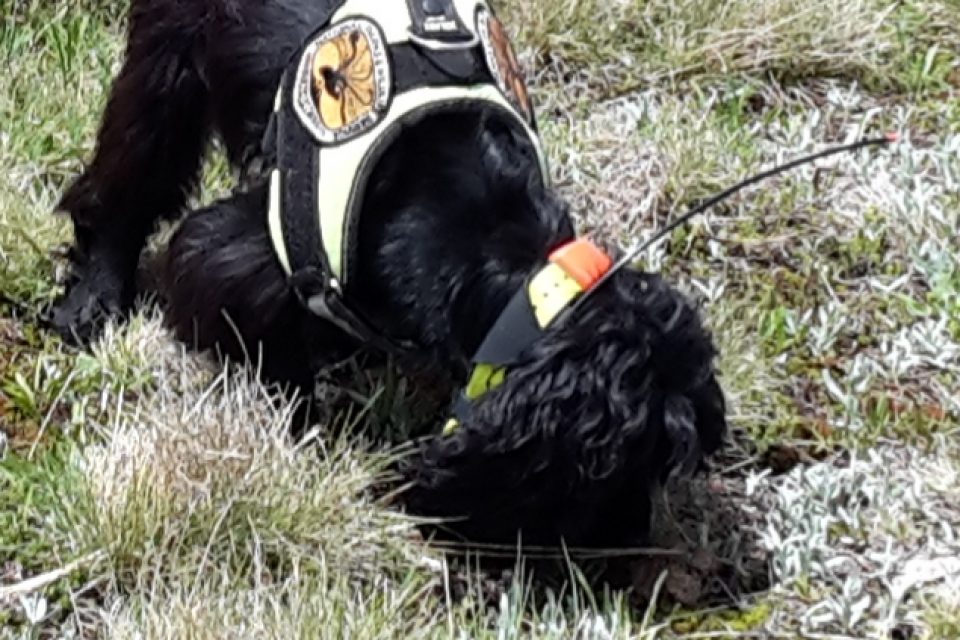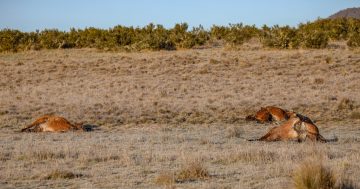
Paterson’s Curse lights up Mt Painter Nature Reserve near the summit path in West Belconnen. Photo: Friends of Mt Painter, Facebook.
The hills are awash with purple after the return of spring rains but the spectacular display is a scourge on the landscape and a threat to horses.
Paterson’s Curse is a hardy, prolific invasive European flowering plant, that may be quite beautiful but crowds out native species and can be deadly to horses who ingest it while grazing.
After the 2003 bushfires when there was little else to graze on, multiple horses died from its toxic effects on the liver.
ACT Government vet Kyeelee Driver says the tell-tale signs are listlessness, poor appetite and disorientation, but by the time these signs are noticed it’s too late as there is no treatment. The toxin destroys the liver which cannot regenerate.
Ms Driver says horses won’t generally eat it by choice but if there is nothing else in the paddock or it gets mixed up in pasture then its effects can take hold over time.
And while the upside in a season such as this is that there is plenty of feed, Paterson’s Curse can easily infest a paddock and horses can ingest it unwittingly.
”The responsibility comes down to everyone to try to control it,” she says. “It’s incumbent on horse owners not to bring it into paddocks as well.”
One plant can produce 3,000 seeds and they can get into other paddocks from hay, vehicles or even horse manure.
Ms Driver says land managers need to adjust their management practices to deal with this much Paterson’s Curse at this time of year.





ACT Parks and Conservation has a regular program to root out invasive plants, and Paterson’s Curse is one of a number that can explode across the landscape and crowd out native species.
Invasive plants coordinator Steve Taylor says Paterson’s Curse is worst in disturbed areas such as grazing paddocks but can spread to high conservation areas and out-compete native wildflowers.
”Paterson’s Curse brings [the issue of invasive pants] home because it is such a conspicuous plant,” he says.
It is one a few for which Parks and Conservation deploy CSIRO-developed biological controls, in this case a weevil, but it is augmented by the more common spot spraying and chipping methods, especially while numbers build up after the drought.
Mr Taylor says that not enough funding goes into biological controls although there are CSIRO scientists champing at the bit to develop more.
He says that while the ACT has quite a well-funded invasive plants control program at $2.1 million a year, the fast-moving threat of plants such as Paterson’s Curse requires a strategic response prioritising the protection of valuable sites, such as wildflowers or restoration work.
Paterson’s Curse control sites number 345 across Canberra’s nature reserves, out of 53,450 invasive plant control sites overall.
Parks and Conservation also employs sniffer dogs and drones to identify invasive plant outbreaks.
Mr Taylor says that because of the rain, the battle against all invasive species will be intense, with African love grass enemy the top priority, along with St John’s Wort and serrated tussock.
Keeping seeds and plant material out of the reserves and Namadgi National Park is also vital. Contractors must clean their machinery and boot cleaning stations are being established, such as the one at the iconic Stockyard Spur walk.





















